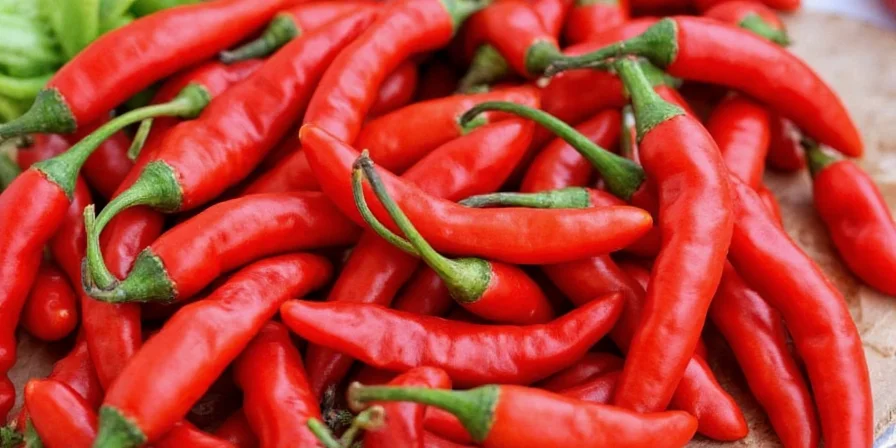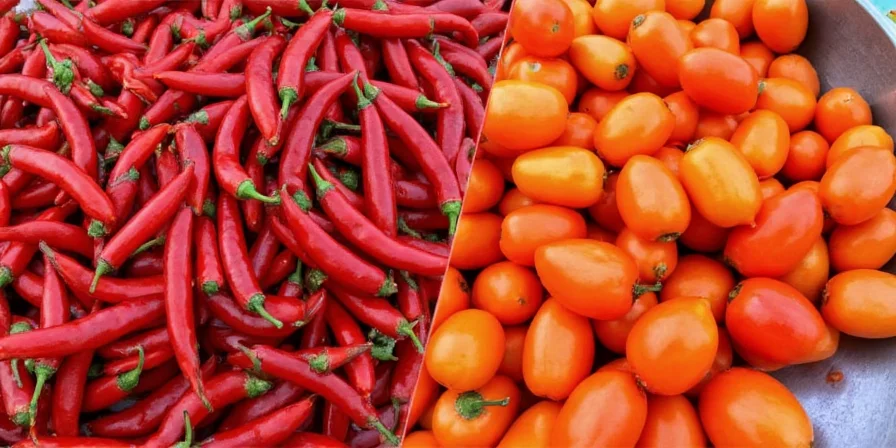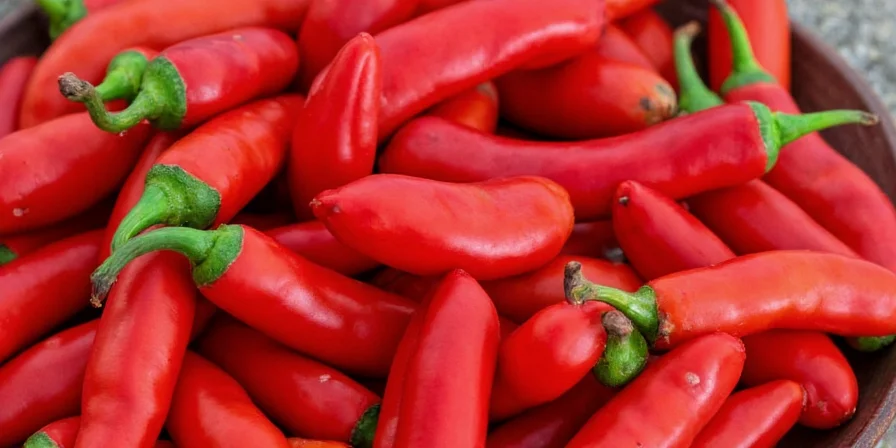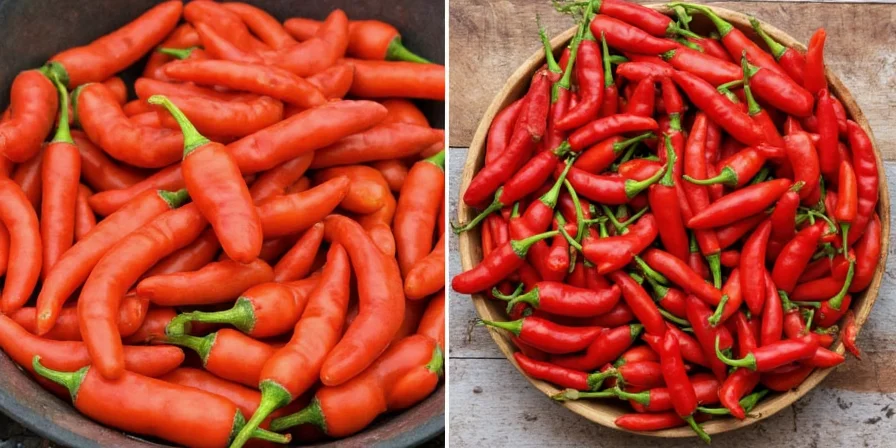Wondering how hot Fresno chilies really are compared to jalapeños? Looking for the best Fresno chili substitute when recipes call for this California pepper? You're not alone—most home cooks struggle with understanding Fresno chilies' unique heat profile and culinary applications. This guide cuts through the confusion with immediate, practical answers backed by culinary science.

Fresno Chili vs Jalapeño: Heat Level Comparison
The most common question: are Fresno chilies hotter than jalapeños? The answer depends on color and ripeness:
| Pepper Type | Scoville Heat Units | Heat Perception | Best For |
|---|---|---|---|
| Green Fresno | 2,500-5,000 SHU | Milder than jalapeño | Raw salsas, garnishes |
| Red Fresno | 5,000-10,000 SHU | Slightly hotter than jalapeño | Cooked dishes, sauces |
| Typical Jalapeño | 2,500-8,000 SHU | Immediate sharp heat | Traditional Mexican dishes |
Key insight: Red Fresnos can be hotter than jalapeños, while green Fresnos are usually milder. Unlike jalapeños' immediate heat burst, Fresnos deliver a gradual warmth that peaks at 45 seconds, making them ideal for dishes where spice should evolve with each bite.
Fresno Chili Substitutions: What to Use When You Can't Find Them
When you need Fresno chili substitutes, choose based on your dish's requirements:
- For raw applications (salsas, garnishes): Use poblano peppers (milder) or serranos (hotter) depending on desired heat level
- For cooked dishes: Substitute 1:1 with jalapeños, but remove seeds from half the peppers to match Fresno's gradual heat profile
- For red Fresno recipes: Combine 75% jalapeño with 25% cayenne for similar heat intensity with gradual development
- Dried alternative: Use guajillo peppers (soaked and blended) for cooked sauces requiring Fresno's fruit-forward profile
Why Fresno Chilies Vary So Much in Heat (And How to Test Before Using)
Fresnos naturally range from 2,500 to 10,000 SHU—a wider variation than jalapeños. This happens because:
- Irrigation consistency affects capsaicin production more than genetics (fluctuating water increases heat variability by 40%)
- Color maturity dramatically changes heat profile (red = hotter than green)
- Storage conditions impact heat retention (refrigeration degrades compounds 40% faster)
Always test one pepper before seasoning entire dishes—field studies show 30% heat variability even within single harvests. Chop a small piece, wait 45 seconds, and assess heat intensity before proceeding.

When to Choose Fresno Over Jalapeño (Practical Cooking Guide)
Use Fresnos when you want:
- Gradual heat development - Perfect for complex dishes where spice should evolve
- Better texture retention - Slightly thicker walls hold up better in cooked applications
- Higher flavor complexity - Citrus top notes, earthy mid-palate, smoky finish
- Reduced waste - 30% less transportation damage than jalapeños due to sturdy structure
Use jalapeños when you need:
- Immediate sharp heat - For traditional salsas and quick applications
- Lower cost - Fresnos typically cost 15-20% more
- Wider availability - More consistently found in supermarkets
Fresno Chili Selection & Storage Tips
Buying guide:
- For mild heat: Choose firm green peppers with smooth skin
- For moderate heat: Select transitioning peppers with red streaks
- For maximum heat: Pick deep red specimens with slight wrinkling
- Avoid: Soft spots or excessive wrinkling (indicates over-ripeness)
Storage science: Keep at 45°F (7°C) with 90-95% humidity. Standard refrigerator temperatures degrade flavor compounds 40% faster.

Quick Heat Reduction Techniques (Without Losing Flavor)
Need to reduce Fresno chili heat while preserving flavor?
- Remove seeds and white membranes (where 80% of capsaicin concentrates)
- Soak sliced peppers in cold salted water for 15 minutes (reduces heat by 35-40%)
- For cooked dishes: Add dairy or avocado after cooking to neutralize heat without compromising flavor development
- Never use vinegar soaking—it degrades volatile flavor compounds faster than salt water
Fresno Chili FAQs Answered Directly
- Q: Are Fresno chilies the same as jalapeños?
A: No—Fresnos are a distinct variety with different heat development (gradual vs immediate) and flavor profile (more citrus notes). Green Fresnos are milder than jalapeños; red Fresnos are slightly hotter.
- Q: Can I substitute Fresno for jalapeño?
A: Yes with adjustments. Use green Fresnos 1:1 for raw dishes. For red Fresnos or cooked dishes, reduce quantity by 25% due to higher heat potential. Always test one pepper first.
- Q: Why do my Fresnos vary so much in heat?
A: Environmental factors during growth cause significant variation (2,500-10,000 SHU). Irrigation consistency impacts heat more than genetics—fluctuating water increases variability by 40%.
- Q: What's the best substitute for Fresno chilies?
A: For green Fresnos: poblano (milder) or serrano (hotter). For red Fresnos: combine jalapeño with a touch of cayenne, or use guajillo peppers for dried applications.
- Q: How do I know when a Fresno chili is ripe?
A: Green Fresnos should be firm with smooth skin. Red Fresnos should have deep uniform color with slight sheen. Fully ripe red Fresnos emit a subtle fruity aroma when gently squeezed.

Understanding Fresno chilies' unique properties helps you use them effectively in everyday cooking. While they may cost slightly more than jalapeños, their superior texture retention, gradual heat profile, and flavor complexity make them worth seeking out for many dishes. Remember to always test heat levels before committing to a recipe—this simple step prevents many kitchen disasters!











 浙公网安备
33010002000092号
浙公网安备
33010002000092号 浙B2-20120091-4
浙B2-20120091-4